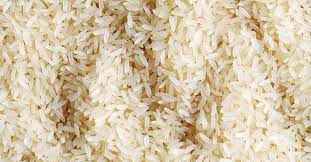
According to the information given by the experts in rice class format, rice of 3 mm to 6 mm length is classified as coarse or medium coarse, thin / thin if it is 6 mm long and long, fragrant if it is fragrant with length 6.5 mm to 8 mm or more. . However, if it is fragrant with a size of 3 mm in length, it is called aromatic class. Such as sugar cane, kalizira or similar fragrant rice. It is further stated that there are some varieties of rice which are 8 mm long but the side size is more than 2 mm, then they are classified as thick or medium thick or medium thin variety. In other words, in case of being considered as thin / thin rice, its size should be as much as the length of the rice, its lateral size should be one-third to one-fourth. The size ratio of fine rice will be 3.5: 1 and it must be peeled from the rice.
Any consumer can easily get the truth of adulterated rice by testing the samples collected from the thin / thin rice bags in the market using the slide calipus. It can be seen that there is a mixture of rice of different sizes in the same bag. Buyers buy these rice at the price of thin / fine rice and after cooking it at home, it can be seen that the rice becomes thick or cracked. Basically, all these are cheating the consumers by cutting and polishing thick or medium thick or long-thick rice and selling it at the price of thin / thin rice which is a clear violation of sections 31 and 32 of the fifth chapter of the Safe Food Act-2013. However, after cooking thin / aromatic or aromatic rice, such size and safe, taste and smell will not change; The proportional rate will also be maintained.
Among the top choices of rice buyers in the country are Miniket, Atash, Kajal Lata. Millers are launching a variety of medium coarse, long thick medium medium thin varieties of rice using the fictional and well-known brand name Miniket. Bri-28 is a medium thin variety which belongs to the category of coarse rice. Due to low yield, the cultivation of pajamas, once more popular, is now on the verge of extinction. There is Kajal Lata which is being produced by the millers from Subarna Lata, Swarnalata or gold variety of paddy and is being released in the market under the brand name Kajal Lata. All its varieties are thick or medium thick or medium thin. These varieties of rice are also classified as coarse rice in terms of pricing. So why would a consumer pay 15 rupees per kg of rice or 20 rupees more per brand to buy thick rice called Chikon / Saru?
According to the Rice Research Institute, BADC and the Department of Agricultural Extension, 85 per cent of the total rice produced in the country comes from high yielding (Ufshi) and hybrid rice of coarse, medium coarse, long coarse and medium thin varieties. That is why the price of coarse rice is taken into consideration in determining the price of rice officially. The Department of Agriculture Marketing has fixed up to Rs 36 per kg of Wari coarse rice. This rule is also followed in the case of government rice procurement. But completely different realities exist in the rice market.
The government has already completed and implemented CIP-1 with three goals and objectives in mind in achieving reliable and sustainable food security for all citizens in the National Food Policy Plan as one of the sectors considered for sustainable development. The goal was to ensure adequate supply of safe and nutritious food, affordability of food for all and adequate nutrition for women and children. The country has now become not only self-sufficient in food but also a country of surplus food by ensuring food security for the growing population of the country due to its already groundbreaking success in achieving this goal.